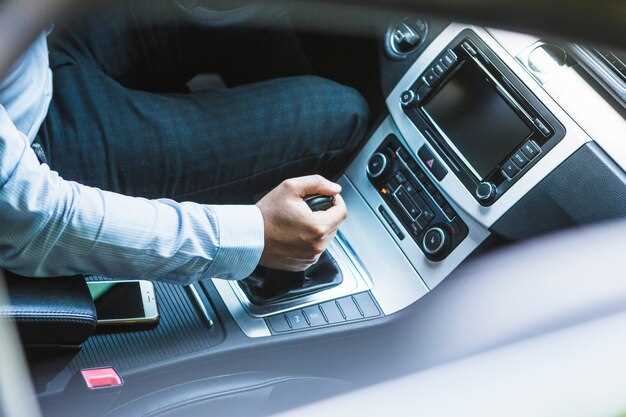
In today’s fast-paced world, staying connected while on the road has become more crucial than ever. A car’s infotainment system plays a pivotal role in enhancing the driving experience by providing access to navigation, music, and communication tools. However, many vehicles come equipped with outdated or limited infotainment options. Upgrading your car’s system can transform daily commutes and long road trips into convenient and enjoyable journeys.
This article aims to guide you through effective strategies to enhance your car’s infotainment capabilities. From hardware upgrades to software enhancements, we’ll explore various options that can cater to your specific needs and preferences. Whether you’re an audiophile looking for superior sound quality or a tech enthusiast eager for the latest features, there’s something here for everyone.
By following these tips, you can ensure your infotainment system not only meets your expectations but also enhances your driving experience. Let’s delve into the essential upgrades that can make your car smarter, more entertaining, and truly connected.
Assess Your Current Infotainment Setup
Before diving into upgrades for your car’s infotainment system, it’s crucial to evaluate your existing setup. Understanding its strengths and weaknesses will guide you in making informed decisions about which enhancements are necessary to meet your needs.
Start by reviewing the functionalities that your current system offers. List out the features that you use frequently and those that you rarely or never use. This will help determine if an upgrade is essential or if adjustments can improve your current experience without extensive modifications.
| Feature | Usage Frequency | Comments |
|---|---|---|
| Navigation | Daily | Works well, but lacks real-time traffic updates. |
| Music Streaming | Daily | Connected apps are slow to load. |
| Bluetooth Connectivity | Weekly | Occasionally drops connections. |
| Voice Command | Rarely | Limited accuracy; not user-friendly. |
| Smartphone Integration | Daily | Compatibility issues with some apps. |
Next, identify any additional features you wish your system had. Consider factors such as smartphone integration compatibility, voice recognition capabilities, and available connectivity options like Wi-Fi or USB ports. This will help you prioritize which upgrades to pursue based on your preferences.
Lastly, assess the overall user experience. How easy is it to navigate the system? Are the menus intuitive? Take note of any frustrations or limitations you encounter to better articulate your needs when evaluating potential upgrades.
Choose the Right Upgrades: Apps and Features That Matter
When upgrading your car’s infotainment system, selecting the right apps and features is crucial for enhancing your driving experience. Begin by evaluating your needs. Consider whether you prioritize navigation, entertainment, or connectivity. This focus will guide you in making informed decisions about which upgrades will be most beneficial.
Navigation apps are essential for modern drivers. Programs like Google Maps, Waze, or Apple Maps provide real-time traffic updates, route optimization, and alternative pathways to avoid congestion. Ensure that your infotainment system supports these applications for seamless integration. Look for systems that offer voice command capabilities, allowing you to operate navigation hands-free, promoting safety on the road.
Entertainment options also play a significant role. Streaming services such as Spotify, Apple Music, and Pandora can enhance your in-car experience. Check if your system supports these apps or if it allows for Android Auto or Apple CarPlay integration. These platforms give you access to a plethora of music and podcast choices while keeping your interface user-friendly.
Compatibility with communication apps is another vital aspect. Integration with messaging and calling apps ensures you stay connected without distraction. Apps like WhatsApp or Skype can allow for hands-free messaging and voice calls, making it easier to communicate while driving.
Consider also the importance of vehicle diagnostics and maintenance apps. Features that provide real-time feedback on your car’s performance can enhance your vehicle’s longevity. Apps that monitor fuel efficiency, engine performance, and maintenance scheduling keep you informed and proactive regarding your car’s health.
Lastly, don’t overlook customization options. Look for infotainment systems that allow personalized settings, including themes, shortcuts, and app placements. This personal touch can significantly upgrade your user experience, making it more enjoyable and tailored to your preferences.
Install Upgraded Hardware for Enhanced Performance
To truly upgrade your car infotainment system, installing upgraded hardware is crucial. Enhanced components can significantly improve performance, responsiveness, and overall functionality. Here are several key upgrades to consider:
- Head Unit Replacement: A modern head unit can provide better connectivity options, improved sound quality, and a user-friendly interface. Look for models that support Apple CarPlay and Android Auto for seamless smartphone integration.
- Improved Speakers: Upgrading your car’s speakers can elevate the audio experience. Consider higher quality coaxial or component speakers that deliver clearer sound and enhanced bass response.
- Amplifier Installation: Adding an amplifier can greatly enhance sound quality by providing the necessary power to your speakers. This results in reduced distortion and greater overall volume levels.
- Subwoofer Addition: A dedicated subwoofer can increase the low-frequency response of your audio system, adding depth to your music. Choose between a powered subwoofer or a passive model, depending on your preferences and setup.
- GPS Antenna Upgrade: A high-quality GPS antenna can improve navigation accuracy and speed. This is essential for reliable and efficient route guidance in real-time.
- Bluetooth Adapter: If your current system lacks Bluetooth capability, adding an adapter can enable hands-free calling and wireless audio streaming, increasing convenience while driving.
- Display Upgrade: If your infotainment system has an outdated screen, replacing it with a high-definition touchscreen can improve visibility and usability. Larger displays often feature better resolution and touch sensitivity.
When upgrading, ensure compatibility with your vehicle and existing systems. Investing in quality hardware will not only enhance your driving experience but also increase the resale value of your vehicle.
Integrate Smartphone Connectivity for Seamless Use
To enhance your car infotainment system, integrating smartphone connectivity is essential. This allows you to access your favorite apps, navigation tools, and media directly from your vehicle’s interface, ensuring a smoother driving experience.
Start by checking if your car supports popular systems like Apple CarPlay or Android Auto. These platforms allow drivers to mirror their smartphone’s interface, enabling easy access to music, calls, messages, and navigation without distraction. Ensure your smartphone is compatible and updated to the latest software version to guarantee the best performance.
Next, connect your smartphone to the infotainment system via USB or Bluetooth. For a wired connection, use the appropriate cable to connect your device, which often results in better audio quality and charging capabilities. If you prefer a wireless setup, confirm that both your car and smartphone support Bluetooth audio streaming. Once paired, you can manage calls and music with voice commands or steering wheel controls, which promotes safety and convenience.
Furthermore, explore applications that enhance the functionality of your infotainment system. For instance, navigation apps like Google Maps or Waze provide real-time traffic updates and route optimization, making your journeys more efficient. Music streaming services like Spotify or Apple Music integrate easily, allowing you to enjoy your playlists without fumbling with your phone.
Lastly, consider customization options within the infotainment system. Many systems allow you to rearrange app icons, choose favorite contacts, and adjust sound settings to suit your preferences. Take the time to personalize the interface, making it intuitive and user-friendly, which enhances the overall driving experience.
Optimize Audio Quality with Custom Settings

To enhance your car’s audio experience, utilize the custom settings available in your infotainment system. Start by adjusting the equalizer settings to match your personal listening preferences. A typical equalizer allows you to boost or reduce certain frequency ranges such as bass, midrange, and treble. If you enjoy deep bass, increase the low frequencies while ensuring the mid and high frequencies are balanced to prevent distortion.
Most systems also include sound presets designed for various music genres. Experiment with these presets to find one that complements your favorite styles, but remember that custom adjustments often provide superior results.
The placement of sound is another critical factor for optimizing audio quality. Utilize features like balance and fade to adjust how sound is distributed between the front and rear speakers, as well as between the left and right sides. This ensures a more immersive listening experience that caters to your seating position.
Consider the sound settings related to volume leveling and loudness adjustment. Volume leveling can help maintain a consistent audio level across different tracks, while loudness settings can enhance quieter sounds at lower volumes, providing a fuller listening experience regardless of volume levels.
If your infotainment system supports spatial audio or surround sound settings, enable these features to create a more dynamic and enveloping audio environment. This technology can simulate a concert-like atmosphere, making your drives more enjoyable.
Lastly, regularly update your infotainment system’s software. Manufacturers often release updates that can improve audio algorithms, enhance equalization features, and fix bugs, ensuring your system delivers the best sound performance possible.
Regularly Update Your System for New Features and Security
Keeping your car’s infotainment system updated is crucial for maximizing its performance and ensuring a safe driving experience. Manufacturers frequently release updates that introduce new features, improve existing functionalities, and enhance overall system stability.
New Features: Updates can include a variety of new applications, improved user interfaces, and additional compatibility with the latest devices. By regularly checking for updates, you can access these innovations, providing a more enjoyable and efficient driving experience. For instance, new navigation capabilities may offer more accurate traffic data or enriched destination recommendations.
Security Enhancements: As technology evolves, so do potential security vulnerabilities. Regular updates often include patches that protect your system from cybersecurity threats. Ignoring these updates could leave your infotainment system susceptible to hacks or data breaches. Ensuring you are running the latest version helps maintain not just your privacy, but also the functionality of your entire infotainment setup.
How to Update: Most infotainment systems offer an easy way to update via Wi-Fi or through a USB connection. Check your vehicle’s manual for specific instructions. Some manufacturers even provide mobile apps that notify you when an update is available, streamlining the process. Consider setting a reminder to check for updates periodically to keep your system running smoothly.
In summary, regularly updating your vehicle’s infotainment system is essential for both accessing new features and maintaining security. Staying up-to-date ensures that your ride remains modern and protected against evolving threats.















